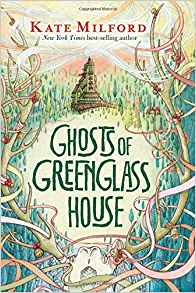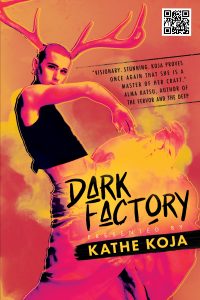Paul Di Filippo Reviews The Man Who Walked Through Cracks: The Collected Short Fiction, Volume Five by R.A. Lafferty
 The Man Who Walked Through Cracks: The Collected Short Fiction, Volume Five, R.A. Lafferty
The Man Who Walked Through Cracks: The Collected Short Fiction, Volume Five, R.A. Lafferty
(Centipede Press 978-1613472026, $75, 360pp, hardcover) March 2019.
I last checked in with this essential series upon the release of Volume Three, reviewed at this very locale. All my praise, issued then, for sheer production values — and all my quibbles about the limited availability of such a fine series — still obtain, as does my admiration for the editorial labors of John Pelan and the design genius of Jacob McMurray. If only we could have a program of Lafferty for the Masses, this would be a finer world. But given the inexplicable strictures of the marketplace and the unfathomability of mass sensibilities, we must be content with the continuation of this luxury niche undertaking.
However, there has been one new development in the Church of Lafferty, and that is the appearance from UK publisher Gollancz of The Best of R.A. Lafferty, assembled by ace anthologist Jonathan Strahan. You can see the table of contents at the book’s Goodreads link, along with the stellar names of all the folks who have contributed story introductions. And the purchase page at Amazon UK is just a click away, so even USA readers can pick up a copy quite reasonably. Perhaps the dawn of widespread Lafferty accessibility is closer than we think.
Anyone interested in a good overview of the man and his career should of course consult the Encyclopedia of Science Fiction for starters.
This current volume contains stories from all three decades of Lafferty’s active career: the 1960s, 1970s and 1980s. A visit to his ISFDB entry will show that by the 1980s, his magazine appearances had effectively come to an end, and only a couple of small presses still issued his work. That fact is a testament both to Lafferty’s various personal incapacities and the shifting winds of the genre. John Pelan’s knowledgeable “Afterword” explicates further.
Since so much of Lafferty’s attraction is based on his unique prose, I’ll take the liberty of adding a random sentence from each tale to my short descriptions.
A suitably whimsical and impressionistic “Introduction” by Michael Kurland is followed by “The Man Who Walked Through Cracks”. Lafferty chooses a tartly sketched academia as his venue for the satirical account of one savant, Professor Cromwell, who has the annoying (to his peers) facility for seeing down different dimensions. Hailed to a tribunal, Cromwell and his wife triumph despite all odds. “The Kangaroo Plaque was unveiled on the wall to show what sort of hearing this would be: A kangaroo with a lot of kick.”
A variation on the Magical Storefront trope, “In Our Block” finds a proliferation of strange shanties, each offering a different impossible service. One of the older pieces, this tale shines with a kind of Sixties hippie aura, at least to these eyes. “She grow any color hair on bald-headed men.”
Doppelgangers are the theme in “Camels and Dromedaries, Clem”. Our average salesguy hero suddenly splits, and we follow the viewpoint of the twin who walks away from conventionality. But after years, wife Veronica discovers the sundering and seeks to rejoin her husbands. It should be noted that Lafferty’s women are often potent demiurges dealing with males with feet of clay. “Then we will all go back to Rock Island or whatever town that was and get the same hotel room where one of you rose in a daze and left the other one unconscious on the bed.”
“Hands of the Man” is a kind of space-opera scam with a larger-than-life hero at its center. Lafferty loved the kind of Paul Bunyan/Mike Fink figures of American folklore, and his work was an authentic continuation of this tradition. “Only one who knew the diamond-factor well, or who knew all men well, could have known that David was nervous.”
A slight Zelazny vibe inheres with “Among the Hairy Earthmen”, as a group of immortals descend among homo saps to act as gonzo Prometheuses. “Often the Children played at Jealousies and raised up all the black passions in themselves.”
“Barnaby’s Clock” concerns the titular mechanism — part high-tech, part magic — that discerns the ages of objects and makes prophecies as well. “There remained only the four men who knew everything, and myself who did not….”
I detect no actual fantastical elements in the murder mystery titled “Ewe Lamb”, but of course thanks to Lafferty’s presentation it reads as otherworldly. Note, please, the tight plotting and the clever gimmick: Lafferty was not flying by the seat of his pants, no matter how shambolic he seemed. “He is my lamb that has been lost to me.”
A full novella, “How Many Miles to Babylon?” recounts a kind of esoteric regime change, a game of public murders, in which Abdicated Princes and their doubles must be hunted down and slaughtered. While Lafferty is by consensus a lover of life, this tale and many others also display his fascination and intimacy with death. “Imagine a victim becoming in an instant a living tower totally encased in thousands of mad mice!”
The climate-change topicality of “Incased in Ancient Rind” shows Lafferty with his finger on the zeitgeist. “There was a thickening of bone and plate on all boned creatures everywhere….”
In “Rang Dang Koloof”, it turns out that invisible gnomes can cast lariats upon one’s innards, causing painful constrictions relieved only by the titular shout. “The doctor wheezed when he talked, but it was a kindly wheeze.”
“A huge bloody gob fell in front of Valery Mok with a smash and a splash.” There’s the opener to “Flaming Ducks and Giant Bread”, where we learn about certain years missing from the consensus calendar, and the Institute for Impure Science.
“Le Hot Sport” is the name of a motor car, and it’s the subject of a dire prediction concerning one character’s fated death. “And the dead boy, in some sort of post-mortem relaxation, did open his tightly clenched hands, and his brother-cousin did take something from them.”
A fad among teens in “Mud Violet” is not precisely to commit suicide, but to die temporarily so as to experience alternate dimensions. Oh, sure, they plan to come back, but easier said than done. “And Barnaby Sheen was sewing up his daughter’s body with needle and thread, though George Drakos (who was a surgeon) insisted that he would be able to do it better.”
All of creation — or at least appointed representatives from each species — is on the march to receive their new cognomens in “And Name My Name”. But humanity is not happy with theirs. “Many persons were said to have seen two floating islands going past Cyprus in the Eastern Mediterranean.”
Did you know that “Adam Had Three Brothers”, and that they were named Etienne, Yancy, and Rreq? We follow the Wrecks, the descendants of the last, as they perfect their superhuman con games. “So they were married and began one of the famous love affairs of the century.”
A new kind of generation gap springs up in “Bequest of Wings”, when Angela Firmholder, daughter to Potter and Peggy, starts growing wings. Should they be clipped off with bolt cutters? You’ll find out! “People will not need hands when they are grown to full flight and full flight custom.”
Lafferty’s exuberant take on the multiverse is found in “Company in the Wings”. “I am saying that every possible being is in actual existence always.”
And finally, we enjoy a fascinating non-fiction feature, Robert J. Whitaker’s empathetic and clever dialogue with Lafferty.
Lafferty’s use of recurring characters; his magpie plundering of multicultural global myths; his blithe indifference to logic and conventionality; his embrace of crackpot theories and his lateral thinking — all these outstanding traits have few counterparts in today’s scene. Bits of James Blaylock and Jonathan Carroll pertain. Perhaps Rhys Hughes most resembles the Happily Demented Sage of Oklahoma. But so long as we have access to Lafferty’s unique oeuvre, we can reassure ourselves that the world remains stranger than we can ever know.
 While you are here, please take a moment to support Locus with a one-time or recurring donation. We rely on reader donations to keep the magazine and site going, and would like to keep the site paywall free, but WE NEED YOUR FINANCIAL SUPPORT to continue quality coverage of the science fiction and fantasy field.
While you are here, please take a moment to support Locus with a one-time or recurring donation. We rely on reader donations to keep the magazine and site going, and would like to keep the site paywall free, but WE NEED YOUR FINANCIAL SUPPORT to continue quality coverage of the science fiction and fantasy field.








